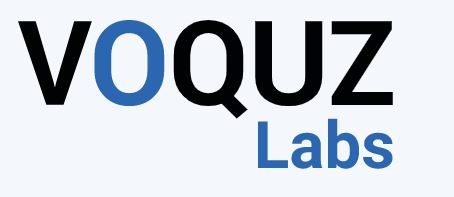SAP GRC
Filter By
Browse By
- SAP Analytics and AI
- SAP Application Development and Integration
- All SAP Application Development and Integration
- SAP ABAP
- SAP ABAP Development Tools
- SAP ABAP Test Cockpit
- SAP API Management
- SAP BAPI
- SAP Basis
- SAP BRF
- SAP Business Application Studio
- SAP CMS
- SAP Design Studio
- SAP Development Tools
- SAP DevOps
- SAP EAI
- SAP EDI
- SAP Extension Suite
- SAP Fiori
- SAP Fiori Elements
- SAP Integration Suite
- SAP Low Code Application Development
- SAP Low Code Automation
- SAP Netweaver
- SAP Release Management
- SAP UI5
- SAP Web Application Server
- SAP Web IDE
- SAP Business Process Management
- SAP Center of Excellence
- SAP CIO
- SAP Customer Experience
- SAP Data and Data Management
- All SAP Data and Data Management
- SAP BW
- SAP BW/4HANA
- SAP Crystal Reporting
- SAP Data Archiving
- SAP Data Center
- SAP Data Governance
- SAP Data Integration
- SAP Data Migration
- SAP Data Quality
- SAP Data Services
- SAP Data Strategy
- SAP Data Visualization
- SAP Data Warehouse Cloud
- SAP DMS
- SAP Document Control
- SAP EIM
- SAP ETL
- SAP ETL Tools
- SAP HANA
- SAP HANA Administration
- SAP HANA Deployment Infrastructure
- SAP HANA Studio
- SAP Master Data
- SAP Master Data Governance
- SAP MDM
- SAP Enterprise Architect
- SAP Enterprise Asset Management
- SAP ERP
- SAP Finance
- All SAP Finance
- SAP Accounting
- SAP AR AP
- SAP Asset Accounting
- SAP Billing Systems
- SAP BPC
- SAP BRIM
- SAP Cash Management
- SAP Central Finance
- SAP Controlling
- SAP COPA
- SAP Cost Center Accounting
- SAP e-invoicing
- SAP FICO
- SAP Finance Automation
- SAP Financial Closing Cockpit
- SAP Financial Consolidation
- SAP Financial Planning
- SAP FX Risk
- SAP General Ledger
- SAP Global Tax Management
- SAP Hyperion
- SAP Order to Cash
- SAP Payment Processing
- SAP Profitability Analysis
- SAP Rebate Management
- SAP S/4HANA Finance
- SAP Universal Journal
- SAP Governance Risk and Compliance
- SAP Human Capital Management
- SAP Intelligent Technologies
- SAP Platform and Technology
- All SAP Platform and Technology
- SAP Business Technology Platform
- SAP Cloud Connector
- SAP Cloud Integration Platform
- SAP Cloud Migration
- SAP Cloud Platform
- SAP Cloud Providers
- SAP Cloud Strategy
- SAP Container Platform
- SAP Digital Asset Management
- SAP Digital Integration Hub
- SAP Digital Signature
- SAP HANA Enterprise Cloud
- SAP HEC
- SAP Hyperscalers
- SAP Infrastructure
- SAP Messaging
- SAP Smart Forms
- SAP Quality and Testing
- SAP Security
- SAP Spend Management
- SAP Supply Chain Management
- All SAP Supply Chain Management
- SAP APO
- SAP Asset Management
- SAP Business Network
- SAP Digital Manufacturing Cloud
- SAP Digital Twin
- SAP EWM
- SAP IBP
- SAP Inventory Management
- SAP Label Printing
- SAP Logistics
- SAP Manufacturing
- SAP Manufacturing Automation
- SAP MES
- SAP MII
- SAP MM
- SAP MRO
- SAP MRP
- SAP Order Management
- SAP Plant Maintenance
- SAP PLM
- SAP Production Planning
- SAP S&OP
- SAP SD
- SAP SPM
- SAP Supply Chain Planning
- SAP Track and Trace
- SAP Transportation Management
- SAP System Administration
What is SAP GRC?
Governance, risk, and compliance (GRC) is a vital set of functions for enterprises to maintain secure and audit-friendly environments while being more confident in their actions. For SAP customers, SAP GRC can mean a set of GRC products provided by SAP itself or the GRC activities and technologies related to SAP systems.
What is SAP GRC?
Governance, risk, and compliance (GRC) is a vital set of functions for enterprises to maintain secure and audit-friendly environments while being more confident in their actions. For SAP customers, SAP GRC can mean a set of GRC products provided by SAP itself or the GRC activities and technologies related to SAP systems.
GRC is growing in importance with rapidly changing regulations that create new compliance challenges. Security and financial risks are also on the rise as companies adopt more cloud technologies, enact bring-your-own-device policies, and enable remote workers in greater numbers.
SAP GRC tools are available to help with areas of risk management, process control, financial compliance, threat detection, identity management, privacy governance, and more. SAP partners and other vendors that provide GRC solutions and consulting services include Appsian Security, Fastpath, and Soterion.
Key Considerations for SAPinsiders:
- Take inventory of your GRC processes and automate wherever possible. In our most recent GRC State of the Market research, successful GRC organizations are focused on automation to streamline processes. To do this, processes being automated need to be repeatable and effective. Before investing in GRC automation technology, it’s best to get processes in line. Many companies are automating the process of keeping track of who makes changes to the SAP systems.
- Digital transformation offers the opportunity to rethink GRC processes. If your company is implementing new software such as SAP S/4HANA, it’s smart to use that project as a catalyst to examine key GRC processes and find out how they can be improved. For example, HP set up a new GRC system during its SAP S/4HANA migration, including rethinking its user access processes and segregation of duties (SoD) ruleset. In the past HP relied on a homegrown tool for access control but implemented SAP Access Control and SAP Process Control as a component of its SAP S/4HANA migration.
- Determine the present and future state of remote work at your company, and how that impacts risk and security. Many companies have gone more remote in the past two years. For GRC groups, this provides more challenges for user access and opens companies up to more cyber threats. Map out your remote working landscape and determine what processes and tools you have in place to reduce risk.
72 results
-

Take the Complexity and Risk Out of Intercompany Transactions
Published: 06/January/2016
Reading time: 4 mins
Companies that operate multiple ERP systems and have international operations continue to be challenged with monitoring cross-entity and intercompany transactions. The risks of waiting to see discrepancies in intercompany billing until month-end close are substantial, ranging from inventory write-offs, top-side adjustments, wasted resources, and financial integrity risk, to major financial exposure. Discover how to simplify…
-

Preparing for New Country-by-Country Reporting Requirements — Are You Ready?
Published: 01/January/2016
Reading time: 5 mins
Tax transparency is gaining steam for multinational enterprises (MNEs) that have to handle tax policies of countries around the world. And with base erosion and profit shifting practices attempting to circumvent burdensome tax policies, MNEs have their hands full ensuring proper taxation. This article explores the new country-by-country (CbC) reporting template recently finalized by the…
Featured Experts
-

Akash Kumar
Associate General Manager, HCL
Become a Member
Unlimited access to thousands of resources for SAP-specific expertise that can only be found here.
Upcoming Events
Related Vendors
Your request has been successfully sent


